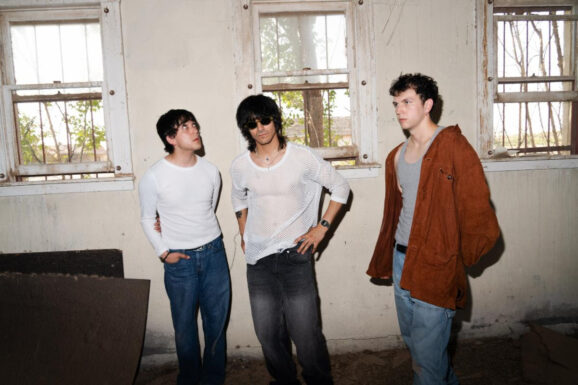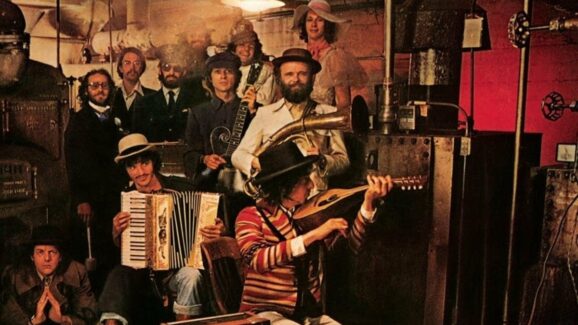Two of the most iconic female singers of jazz and blues, Nina Simone and Etta James, are superb choices to initiate BMG’s new collection series. The Montreux Years, chronicling legendary and previously unreleased live performances from the festival’s storied history. The sound is immaculate and each of these 2CD/2LP sets are packaged in a hardbound book format, complete with extensive liner notes and previously unseen photography. These, and presumably, several others that will follow, are from the extensive collection of audio-visual material of festival co-founder Claude Nobs. His company, Montreux Sounds, owns a collection of 5,000 concerts “Live at Montreux” and has published more than 450 artists, live on the same stage, including shows dating back to the late 1960s. The crystalline sound is due to a technology called MQA, which captures the sound so well that the listener practically feels present at the show. Indeed, the adoring audiences for both Nina and Etta (yes, each has long attained first name status) are the unsung stars of both projects.
Nina Simone – Nina’s collection is like a synopsis of her career from the late’60s to the ’90s as she established a lasting bond with the event and its co-creator and director Nobs. Her trust is reflected in her passionate performances and the freedom to express herself with selections from all five of her concerts: 1968, 1976, 1981, 1987, and 1990. The second CD in the collection captures her poignant 1968 performance in its entirely. Her fiery and unpredictable show from 1976, long considered one of the festival’s most explosive across all artists) has maybe her most emotive take of “Backlash Blues” along with “Little Girl Blue (Pt 1 and 2),” “I Wish I Knew How It Would Feel to Be Free,” “Stars,” and “African Mailman.” Interestingly, although “Four Women,” “Ne Me Quitte Pas,” and “Go to Hell” appear, several other notable Simone classics such as “Mississippi Goddam” and “To Be Young, Gifted, and Black” are not represented in this double CD. Nonetheless, her focus and intensity hits hard in the 1968 performance, giving the listener an opportunity to hear how she would construct sets during that period when she began to incorporate popular rock and pop tunes such as “Don’t Let Me Be Misunderstood” (The Animals) and “To Love Somebody” (The Bee Gees).
The only other recording for this writer that compares to the power of these Nina performances is her three-song piece dubbed the “Martin Luther King Suite,” which she performed in Savannah, GA the night after Dr. King was murdered. That can be found on the RCA/BMG The Very Best of Nina Simone Sugar In My Bowl 1967-1972. Consider though, that these Montreux audiences were predominantly white and well removed from the racial and social turbulence of the U.S. during this period. Yet, in The Montreux Years we do hear a stunning performance of Janis Ian’s “Stars,” which Nina performed for the first time in that 1976 show. She re-imagines Bob Marley’s “No Woman No Cry” as a defiant anthem in her 1990 performance. And we do get enough glimpses of the activist Nina who introduces “Four Women” dedicated to “the Blacks of America, the Blacks of Switzerland, the Blacks of the Middle East, the Blacks of Africa.” She also adds, “They thought I wasn’t political anymore. And What a mistake to think that.” So, we get some of her rebellious, outspoken side but it seems that there was a conscious effort to keep the material well balanced, or perhaps these audiences had a special way of bringing out her brighter side. Unlike her famed I’ll-turn-my-back-on-the-audience persona, Nina is mostly joyous and engaged with the audience throughout, fittingly closing from 1990 with one of her most famous tunes, the immensely upbeat “My Baby Just Cares for Me.”
Etta James – The collection captures Etta’s performances from 1977, 1978, 1989, 1990, and 1993 on the first CD. In all, Etta performed six times at Montreux with her 1975 show, her first time in Europe, represented with highlights thereof on Disc 2. Listening to these performances it’s hard to imagine any female front woman with a more commanding presence than Etta who genuinely excited these audiences. The repertoire is a nice summation of Etta’s career from her early Chess hits “Something’s Got a Hold on Me,” “Tell Mama,” and of course, the medley “At Last, “Trust in Me” and “Sunday Kind of Love.” She pays tribute to Jimmy Reed three times with “What You Want Me to Do,” “Running and Hiding Blues,” and “I Sing the Blues for You.”
One of the more eye-opening aspects of these shows are the musicians that backed Etta. The 1977 band included a mix of stateside and European players such as saxophonist Klaus Doldinger, trumpeter Lew Soloff (Blood, Sweat & Tears), keyboardist Rick Wakeman (Yes), saxophonist David “Fathead” Newman (Ray Charles) and young 20-year-old guitarist Brian Ray, who would later play with Paul McCartney for 18+ years. Robert Cray’s bandmates keyboardist Jim Pugh (1989 show) and bassist Richard Cousins (1993 show) are aside from her longstanding band members such as guitarist Josh Sklair and her son, the drummer Donto James. Nobs was so enraptured with her performances that he joined on harmonica in the 1978, 1990, and 1993 shows. He’s a decent, not great harmonicist, but one can’t say no to the boss and it does attest to the electrifying energy of these performances that he would be moved to join the onstage party. Ray, from the UK, went on to play with Etta for 15 years and wrote and recorded with her for 20 years after that. His comment on Nobs joining the band – “…He was like me when I first got to play with Etta. His eyes sparkled because, in a way, he had arrived.” Indeed, the collection captures Etta is her glorious prime.
The third star of this series is Montreux and its incredibly enthusiastic audiences. We can’t visualize the setting on the shores of Lake Geneva, which itself likely exudes relaxing peace, but it was the mission of the festival to treat the artists like royalty and give them the opportunity to play outside their usual set list(s) with the best sound and audio-visual quality available. Those special touches somehow come through vividly in these recordings where both Nina and Etta seem perfectly relaxed, confident, and totally immersed in Montreux’s special atmosphere.











